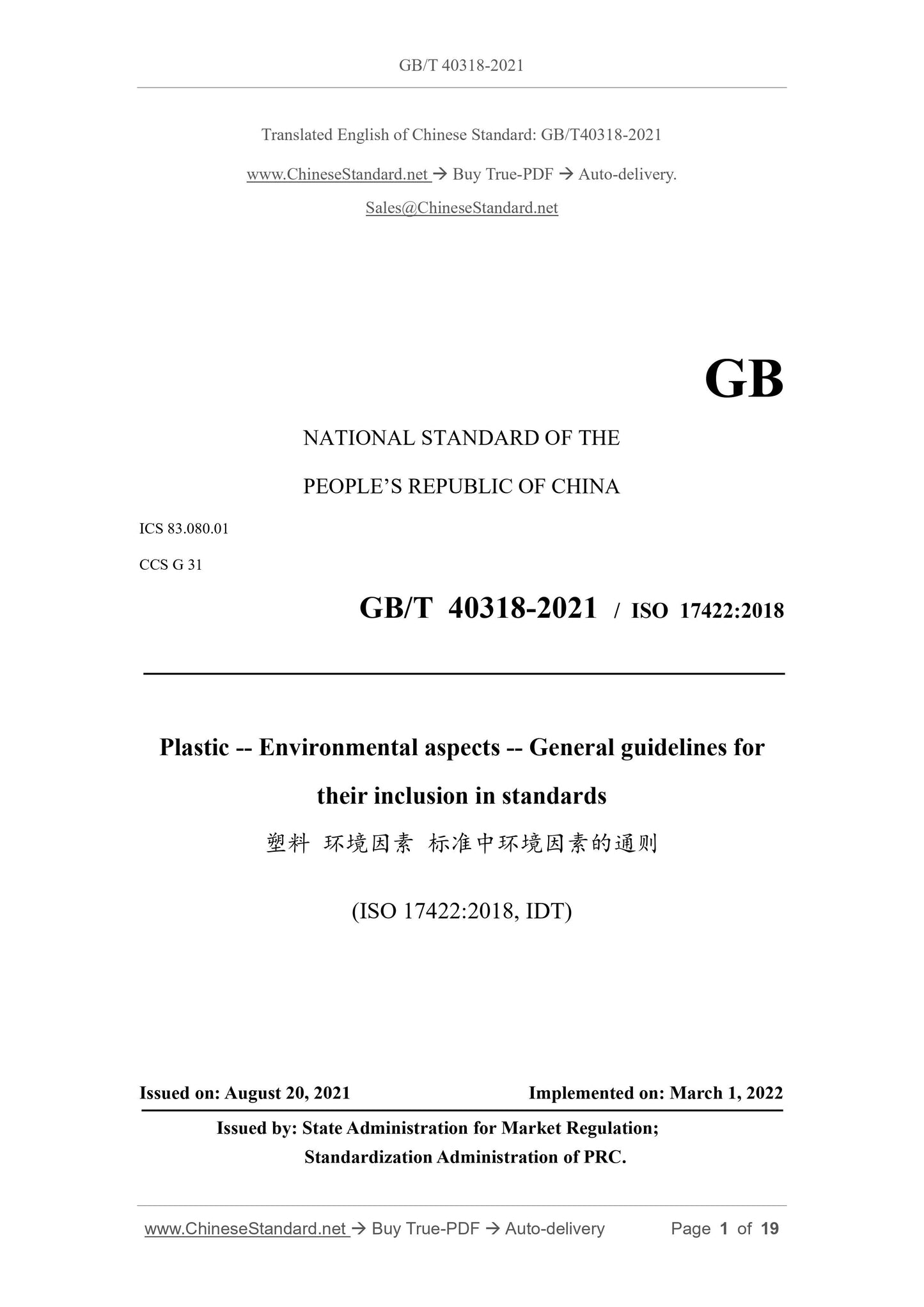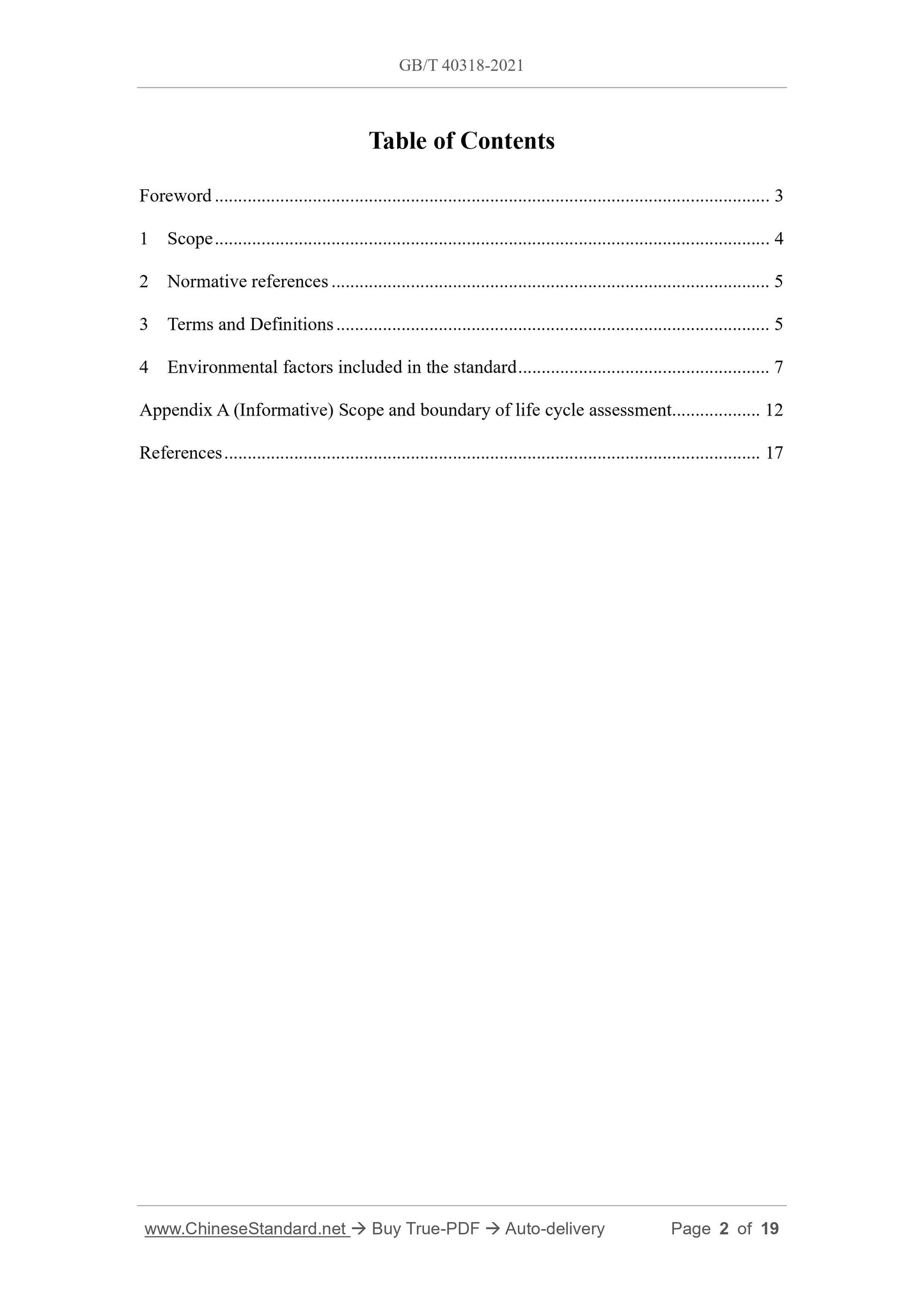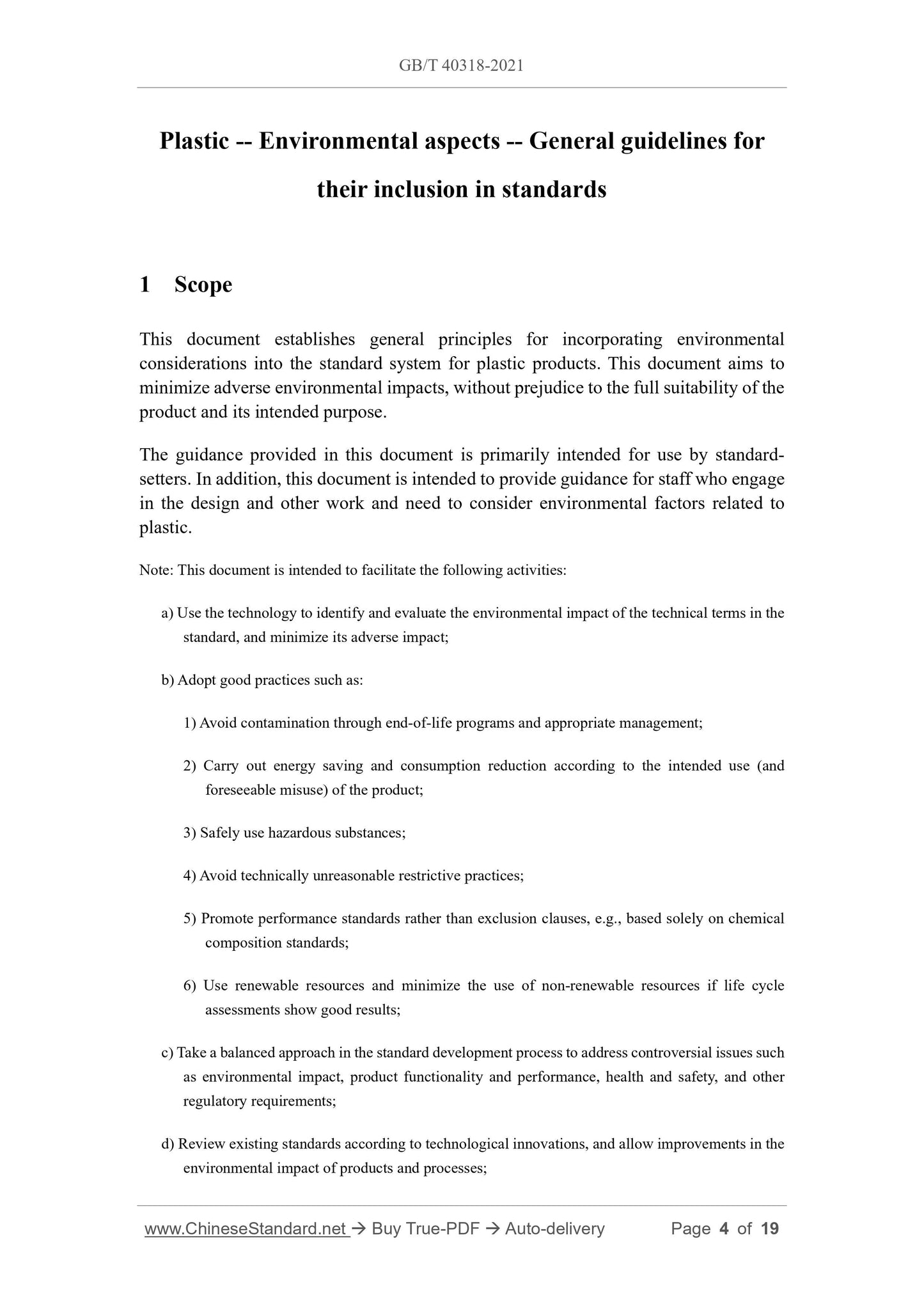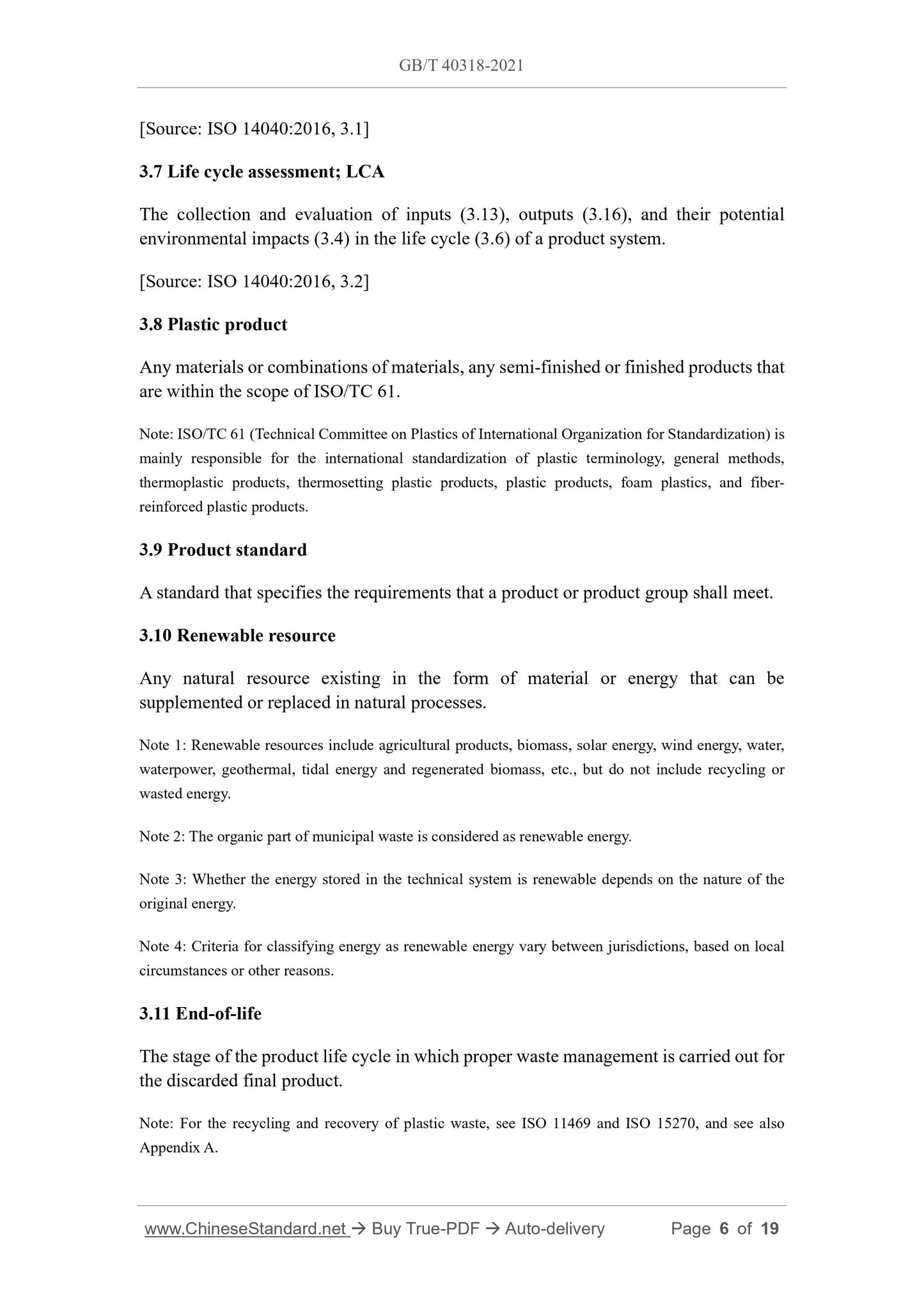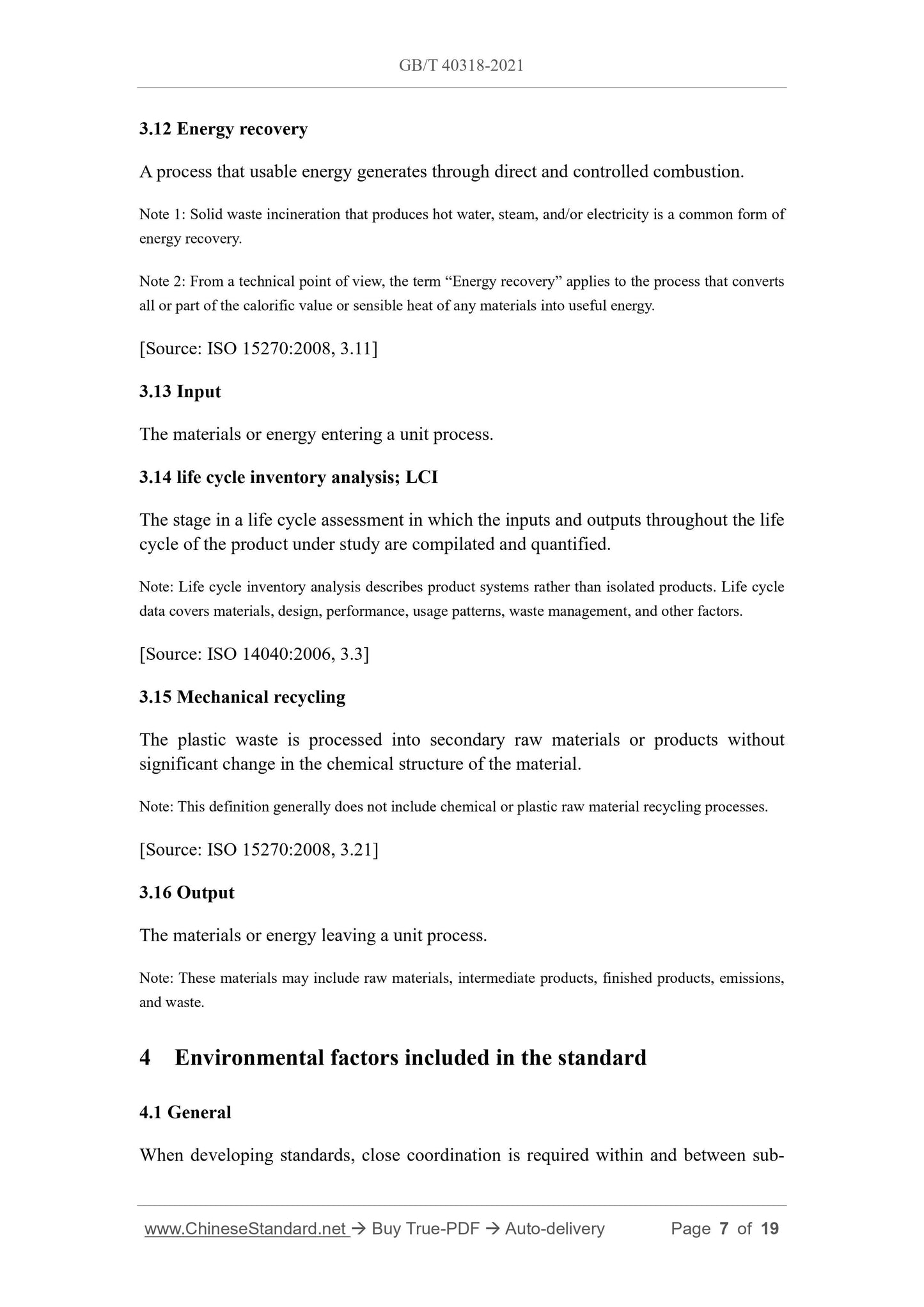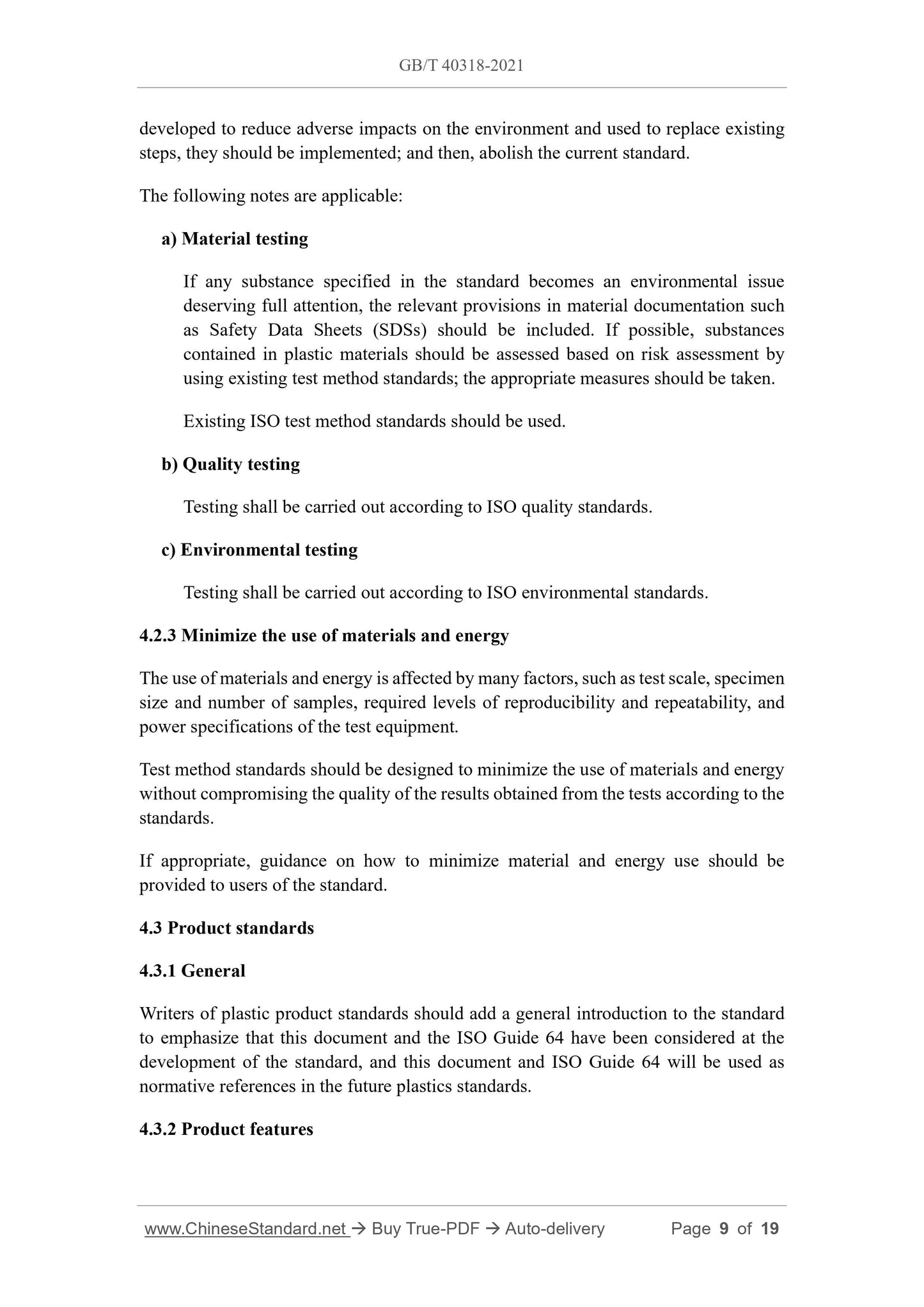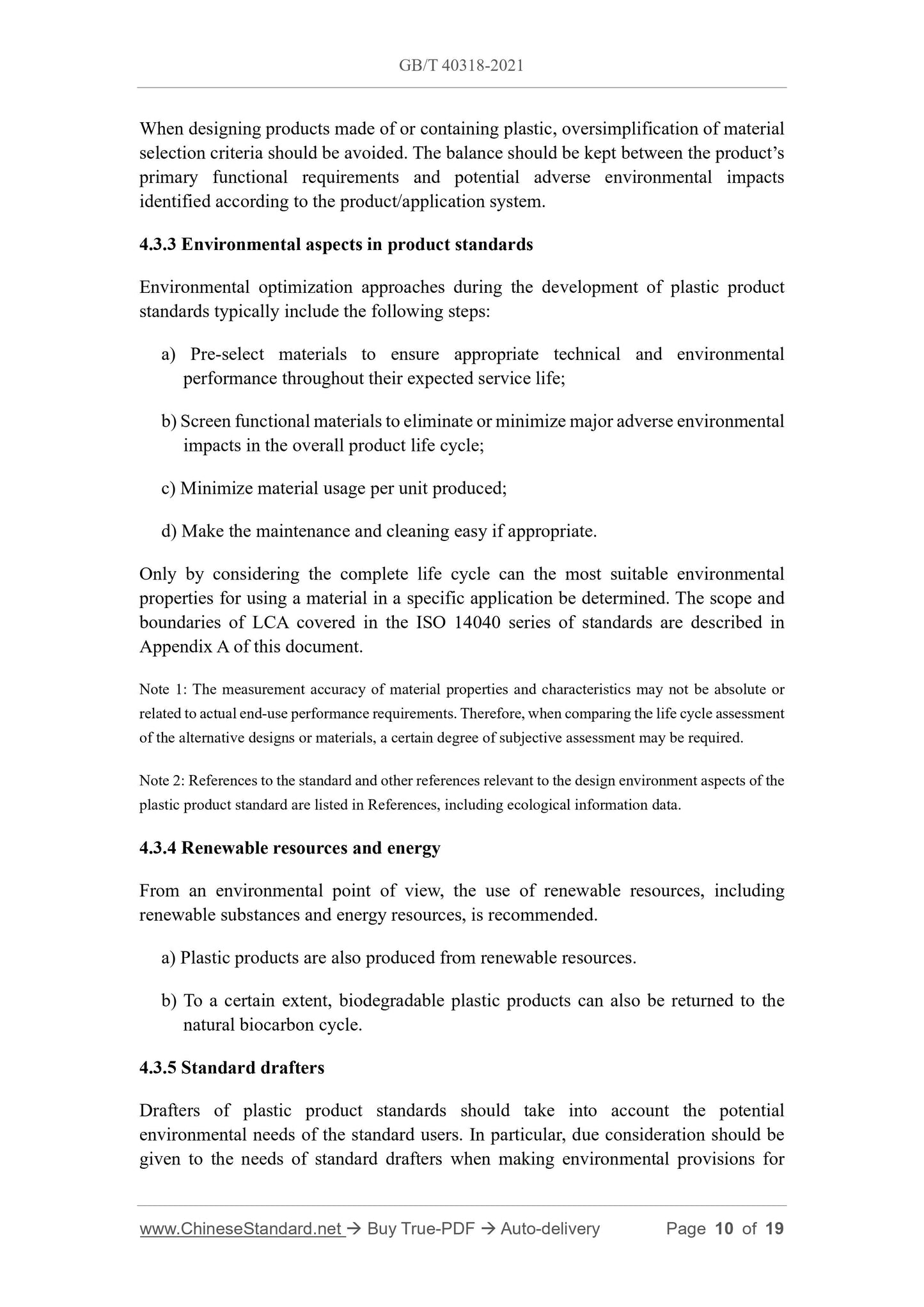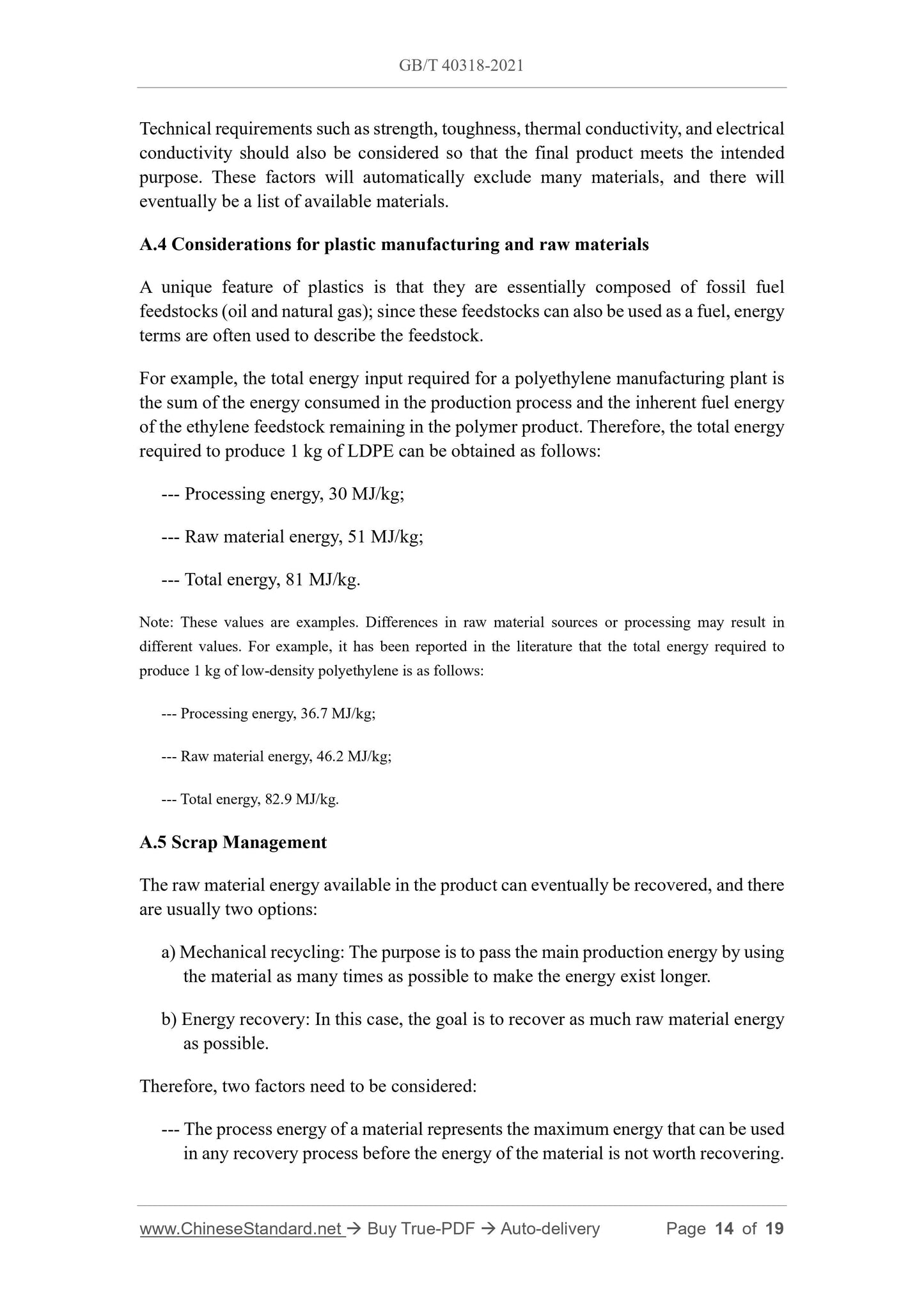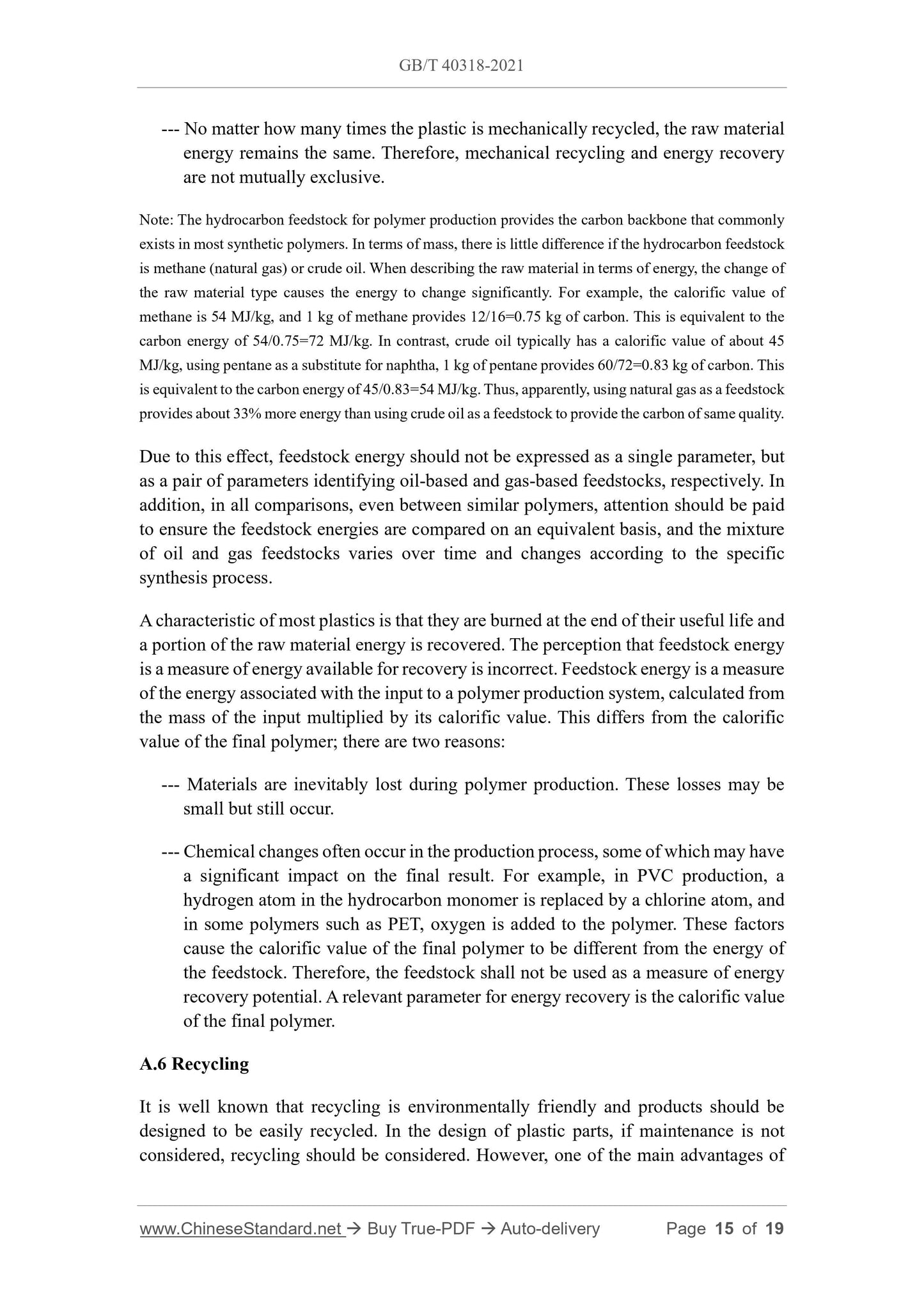1
/
of
9
www.ChineseStandard.us -- Field Test Asia Pte. Ltd.
GB/T 40318-2021 English PDF (GB/T40318-2021)
GB/T 40318-2021 English PDF (GB/T40318-2021)
Regular price
$230.00
Regular price
Sale price
$230.00
Unit price
/
per
Shipping calculated at checkout.
Couldn't load pickup availability
GB/T 40318-2021: Plastics - Environmental aspects - General guidelines for their inclusion in standards
Delivery: 9 seconds. Download (and Email) true-PDF + Invoice.Get Quotation: Click GB/T 40318-2021 (Self-service in 1-minute)
Newer / historical versions: GB/T 40318-2021
Preview True-PDF
Scope
This document establishes general principles for incorporating environmentalconsiderations into the standard system for plastic products. This document aims to
minimize adverse environmental impacts, without prejudice to the full suitability of the
product and its intended purpose.
The guidance provided in this document is primarily intended for use by standard-
setters. In addition, this document is intended to provide guidance for staff who engage
in the design and other work and need to consider environmental factors related to
plastic.
Note: This document is intended to facilitate the following activities:
a) Use the technology to identify and evaluate the environmental impact of the technical terms in the
standard, and minimize its adverse impact;
b) Adopt good practices such as:
1) Avoid contamination through end-of-life programs and appropriate management;
2) Carry out energy saving and consumption reduction according to the intended use (and
foreseeable misuse) of the product;
3) Safely use hazardous substances;
4) Avoid technically unreasonable restrictive practices;
5) Promote performance standards rather than exclusion clauses, e.g., based solely on chemical
composition standards;
6) Use renewable resources and minimize the use of non-renewable resources if life cycle
assessments show good results;
c) Take a balanced approach in the standard development process to address controversial issues such
as environmental impact, product functionality and performance, health and safety, and other
regulatory requirements;
d) Review existing standards according to technological innovations, and allow improvements in the
environmental impact of products and processes;
[Source: ISO 14040:2016, 3.1]
3.7 Life cycle assessment; LCA
The collection and evaluation of inputs (3.13), outputs (3.16), and their potential
environmental impacts (3.4) in the life cycle (3.6) of a product system.
[Source: ISO 14040:2016, 3.2]
3.8 Plastic product
Any materials or combinations of materials, any semi-finished or finished products that
are within the scope of ISO/TC 61.
Note: ISO/TC 61 (Technical Committee on Plastics of International Organization for Standardization) is
mainly responsible for the international standardization of plastic terminology, general methods,
thermoplastic products, thermosetting plastic products, plastic products, foam plastics, and fiber-
reinforced plastic products.
3.9 Product standard
A standard that specifies the requirements that a product or product group shall meet.
3.10 Renewable resource
Any natural resource existing in the form of material or energy that can be
supplemented or replaced in natural processes.
Note 1: Renewable resources include agricultural products, biomass, solar energy, wind energy, water,
waterpower, geothermal, tidal energy and regenerated biomass, etc., but do not include recycling or
wasted energy.
Note 2: The organic part of municipal waste is considered as renewable energy.
Note 3: Whether the energy stored in the technical system is renewable depends on the nature of the
original energy.
Note 4: Criteria for classifying energy as renewable energy vary between jurisdictions, based on local
circumstances or other reasons.
3.11 End-of-life
The stage of the product life cycle in which proper waste management is carried out for
the discarded final product.
Note: For the recycling and recovery of plastic waste, see ISO 11469 and ISO 15270, and see also
Appendix A.
3.12 Energy recovery
A process that usable energy generates through direct and controlled combustion.
Note 1: Solid waste incineration that produces hot water, steam, and/or electricity is a common form of
energy recovery.
Note 2: From a technical point of view, the term “Energy recovery” applies to the process that converts
all or part of the calorific value or sensible heat of any materials into useful energy.
[Source: ISO 15270:2008, 3.11]
3.13 Input
The materials or energy entering a unit process.
3.14 life cycle inventory analysis; LCI
The stage in a life cycle assessment in which the inputs and outputs throughout the life
cycle of the product under study are compilated and quantified.
Note: Life cycle inventory analysis describes product systems rather than isolated products. Life cycle
data covers materials, design, performance, usage patterns, waste management, and other factors.
[Source: ISO 14040:2006, 3.3]
3.15 Mechanical recycling
The plastic waste is processed into secondary raw materials or products without
significant change in the chemical structure of the material.
Note: This definition generally does not include chemical or plastic raw material recycling processes.
[Source: ISO 15270:2008, 3.21]
3.16 Output
The materials or energy leaving a unit process.
Note: These materials may include raw materials, intermediate products, finished products, emissions,
and waste.
Basic Data
| Standard ID | GB/T 40318-2021 (GB/T40318-2021) |
| Description (Translated English) | Plastics - Environmental aspects - General guidelines for their inclusion in standards |
| Sector / Industry | National Standard (Recommended) |
| Classification of Chinese Standard | G31 |
| Word Count Estimation | 14,111 |
| Issuing agency(ies) | State Administration for Market Regulation, China National Standardization Administration |
Share
